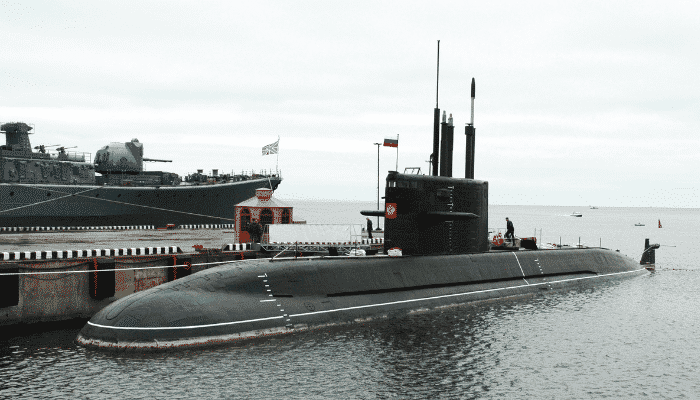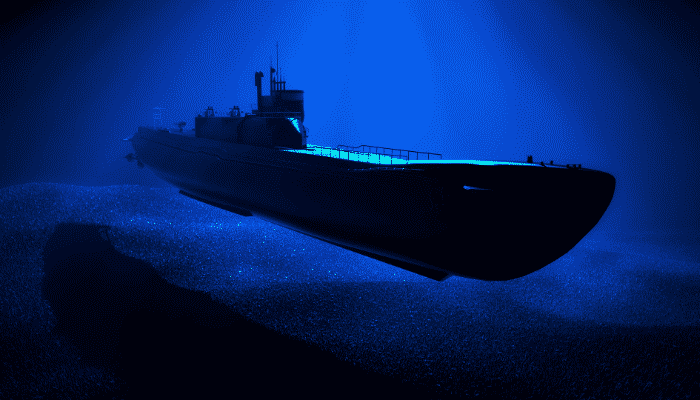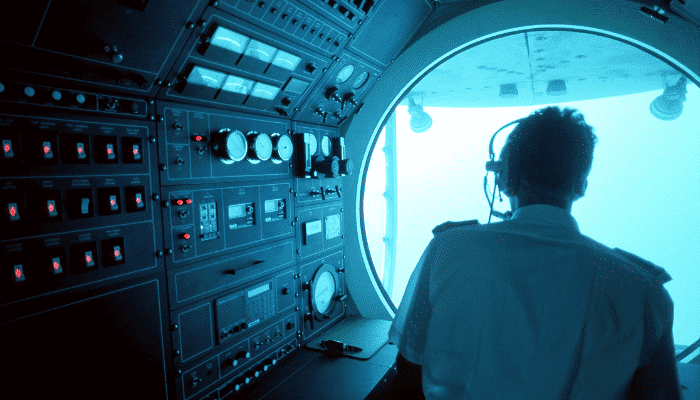
[ad_1]

Most of us are intrigued by submarines. Those pressure vessels ply underwater to titanic depths and are used for an eclectic range of purposes from research to defence.
Though apparently, their design appears simpler to ships in terms of its symmetric and simply enclosed exo-structure, its propulsive, communicating and other internal systems are far more complicated.
Remember, unlike ships, the submarine does not have the privilege to ply on the surface and can remain underwater for days at prodigal depths.
So, they need to cater for more advanced systems and technologies that can sustain at such levels and also enable the vessel as well as its crew to meet all verticals of service, capabilities, safety, and most importantly, survivability.
Now, a primitive question in the minds of many: How does the crew inside a submarine breathe?
It would not be wrong to say that many of us have had this question buzzing in my head since childhood. But as they say, necessity is the mother of invention. So, submarines have their means of producing oxygen continuously to help their crew stay underwater for days at a stretch.

The Environment In Submarine
As expected, the inner environment inside a submarine pressure vessel enclosure is far different as compared to the natural so-called ‘open’ environment. There is complete detachment from natural phenomena like wind, rain, sunlight, cold, and the overall diurnal cycle as a whole.
The most critical aspect is the balance of gases in such a corralled environment. All of us need a perfect environment like the present atmospheric conditions to survive comfortably. This involves the exact composition of gases with normal levels of saturation and pressure.
Any deviation discursion from that delicate balance can jeopardize our lives and our means to function. Breathable air has a density of 1.2 kg/m3.
Essentially, the proper environment for sustenance would be the following composition (by volume) akin to our earth’s natural atmosphere:
- Nitrogen (~78%)
- Oxygen (~21%)
- Other gases including Carbon Dioxide (<1% in aggregate)
Moreover, for living, the safe pressure limits for air and life-saving oxygen gas are 700 to 800 Torr and 120-160 Torr respectively. For a typical adult, the rate of air consumption for sustainable living is around 7 litres per minute at a given 21% normal concentration of oxygen.
So, per day, the consumption of oxygen amounts to around a whopping 600 litres of oxygen for an average healthy person. For even a small research submarine with a complement of 10 crew, the consumption would be a humongous 600 liters of oxygen per day. So, storage of such huge amounts (with surplus margins) is itself a great challenge.
Hence, the generation of oxygen for continual supply is one of the major cornerstones for submarine accommodation and systems design.

Generation of oxygen in submarines
Let us have look at the various means and their chemistries for the generation of oxygen in submarines.
Electrolysis of Water
This is one of the oldest and simplest technologies for the generation of oxygen. This is based on the simple chemistry behind the decomposition of water molecules into hydrogen and oxygen respectively. Before the process of electrolysis, desalination is carried out to remove salt content from the water. Two classic techniques are deployed for this:
Distillation:
The oldest and simplest technique, where sea-water is boiled off, the water is evaporated as vapours salts are crystallized (and removed), and the water vapour is condensed back by colling off the steam through a variety of techniques.
Reverse Osmosis:
This is based on the differential concentration techniques where saline water is passed through fine pores of diaphanous membrane-grade substances at calculated high pressures where freshwater is collected at the other side at low pressure and salt content gets trapped as residues. The process is iterated and continued round the clock.
After the desalination, the electrolytic process takes place in what is known as an ion-exchange system. Alkaline electrolysers are used as a medium containing caustic water solution and 25-30% of Potassium Hydroxide (KOH). Sodium Chloride (NaCl) and Sodium Hydroxide (NaOH) are used as catalysts. So, the water treated is disposed of other electrolytes.
At Cathode, the chemical reaction is as follows: 2H20= 2OH- + H2 (decomposition into hydroxide ions and hydrogen) At anode: 2OH- = ½ O2 + H2 (decomposition of hydroxyl ion into nascent oxygen and hydrogen atoms) The hydrogen generated is released into the seas.
The neutral oxygen, later in the gaseous state, bubbled above the anode is entrapped and stored in Oxygen Tanks. It has been proven that approximately 15 cells of about 1000 amps are required to produce sufficient oxygen for about 100 people. The system, as a whole, is known as Electrolytic Oxygen Generators (EOGs).
Chemical Oxygen Concentrator
This is a more advanced, expensive, and risky process but can produce a constant supply in all conditions. This is commonly used in aircraft, fighter warships, mines, and even spacecraft. So, in submarine technologies, this is often deployed, optimizing the combustible risks and better supply performance.
The chief sources of oxygen are mainly superoxides, chlorates, perchlorates, ozonides, etc. In a typical case of a traditional thermal concentrator, also known as the ‘Oxygen Candle’, Sodium Perchlorate (NaClO3) acts predominantly as the reactor, is mixed with iron or ferrous powder, sometimes Barium Peroxide (BaO2) or Perchlorates in very small amounts (5%) for removal of unwanted residues like hypochlorites.
This combustible mix, when ignited at high temperatures (>600 degrees C) cracks down into Sodium Chloride (NaCl), Iron Oxide, and thermally decomposed oxygen. The iron or ferrous compound acts as a substrate for continued and prolonged combustion. So, the reaction can be defined as:
2 NaClO3 = 2NaCl (sodium Chloride) +3O2 (generated oxygen)
The removal of chlorites and hypochlorite by Barium peroxide is as shown below:
BaO2 + Cl2 = BaCl2 (Barium Chloride) + O2 (Oxygen)
2BaO2 + 4HOCl (hypochlorite) = 2BaCl2 + 3O2 + 2H2O
Alternately, potassium or lithium chlorates or perchlorates can also be used. A combustion time of 45-50 minutes can produce roughly 115 SCF of oxygen at high temperatures. Smoke and salts are removed by filtration. This inflammable system poses a fire hazard and needs to be operated and maintained with high caution.

Solid Polymer Oxygen Generator
This technology is increasingly superseding existing conventional electrolytic methods in EOGs as described above. This is an improvement over the electrolytic technology and uses Solid Polymer Electrolytic Cell (SPE) for carrying out the electrolysis of water in bigger Oxygen Generating Plants (OGPs).
One of the greatest features of this method is the redundancy of using electrolytes like potassium and sodium hydroxides and insulating materials. The plastic or polymerized diaphragm acts as the electrolyte as well as the insulator.
Another very crucial feature is the rapidness of oxygen generation where it takes less than 1/20th of the time required in conventional electrolytic cells as in EOGs. Moreover, it can operate in low-pressure environs in the order of 500-600 psi in charged conditions.
From the viewpoint of safety, it is also becoming a viable option imputing to the low concentration of combustible Hydrogen Gas expended in the process.
Lastly, the rate of oxygen generation is found to be 50% more than EOGs, which augments the endurance capacity of submarines and can cater for adequate oxygen supply with a lesser number of charging cycles.
So, all these fortes of this advanced technology make it a widespread potential replacement of conventional electrolytic EOGs in all new building or retrofitting.
Removal of Carbon Dioxide
Now, every pro has concomitant cons. Here, in submarines, after the generation of oxygen, the removal of harmful carbon dioxide is equally important.
The machinery, internal systems, and equipment, as well as the human crew subsisting inside, will produce carbon dioxide gas. In a corralled environment like a pressure vessel, which is the submarine, there are no viable means of escape of CO2 like in normal open environments.
This poses a problem. Accumulation of carbon dioxide in concentrations greater than 5% can be harmful and the cumulating accretion (superseding even available oxygen levels) can even be fatal or impairing.
Hence, this carbon dioxide needs to be continually expurgated from the inner environment. This process is essentially known as ‘Scrubbing’. Some of the methods are:
Soda Lime Removal
It is the most popular and inexpensive means of removal used for more than a century, also called ‘Carbon Trapping.’ Soda Lime is a mix of Calcium and Sodium hydroxides in water. So, in this process, the carbon dioxide trapped in the gaseous form is liquified. Then this reacts with sodium hydroxide to produce sodium bicarbonate. This Bicarbonate then reacts with calcium hydroxide to yield removable calcium carbonate and water.
CO2 + NaOH =NaHCO3 (Sodium bicarbonate)
NaHCO3 + Ca (OH)2 = CaCO3 (calcium carbonate) +NaOH
———————————————————————————
So, the net reaction turns out to be: CO2 + Ca (OH)2 = CaCO3 + H2O
Using Alcohol Amines
In this method, the water is bubbled through an aqueous solution of an alcohol amine compound. These are chained organic carbon-based compounds.
The most used substance for CO2 scrubbing is monomethyl amine, or shortly known as MEA. There is an exchange column, containing 25-30% of aqueous MEA, through which the air is passed.
The carbon dioxide is trapped in this process. The relative humidity is kept at around 75%. 70-90% of carbon dioxide is removed with one flow. The MEA solution is itself recycled over stainless screens.
The mixture of the MEA with trapped carbon dioxide is passed through glass rings and heated under pressure, driving off the carbon dioxide. Then the MEA is reutilized for absorption. The carbon dioxide is compressed, liquified, and discharged overboard.
Lithium Hydroxide Absorbers
These are also used for removing CO2. The air is passed through the gas canisters holding the lithium hydroxide compound (LiOH). However, here the compound can’t be purified unlike MEA and this is a non-reusable means of carbon dioxide disposal.
Burners
Carbon dioxide and other unwanted substances can be removed by forced oxidation methods. The air is heated and soaked into a Cuprous Oxide-Manganese oxide (CuO-MnO2 ) catalyst environment at very high temperatures. The gaseous mixture is then cooled off and passed through a surface of lithium carbonate (Li2CO3) to remove any acidic gases. In the final stage, the purified air is passed through activated charcoal where the carbon dioxide is stripped off. Here the catalysts are reusable and can be renewed for further filtrations.
Activated Carbon
This is one of the easiest and lately popular means of carbon dioxide elimination. Charcoal is a form of carbon and is ‘activated’ by heating with steam. This removes all unwanted substances from the air by adsorption and capillary action. Activated charcoal has an enhanced adsorption capacity.
Emergency Means of Breathing
In accidents or exigent scenarios, like any other vessel, submarines have an eclectic range of emergency apparatus for their crew before evacuation or resolution of the issue.
Emergency Air Breathing Apparatus (EAB) or the submarine’s bespoke Built-in-Breathing System (BIBS) caters for direct breathing of crew with the help of face masks connected to cylinders or the vessel’s surplus air storage tanks.
Other self-contained units like Oxygen Breathing Apparatus (OBA) using potassium superoxide (KO2), which produces breathable oxygen and removes exhaled CO2 in tandem, or rechargeable and portable breathing gear akin to deep-sea scuba divers are also used.
Over to you. Please let us know your ideas….
Disclaimer: The authors’ views expressed in this article do not necessarily reflect the views of Marine Insight. Data and charts, if used, in the article have been sourced from available information and have not been authenticated by any statutory authority. The author and Marine Insight do not claim it to be accurate nor accept any responsibility for the same. The views constitute only the opinions and do not constitute any guidelines or recommendations on any course of action to be followed by the reader.
How Do Submarines Get Oxygen? appeared first on Marine Insight – The Maritime Industry Guide
[ad_2]
This article has been posted as is from Source